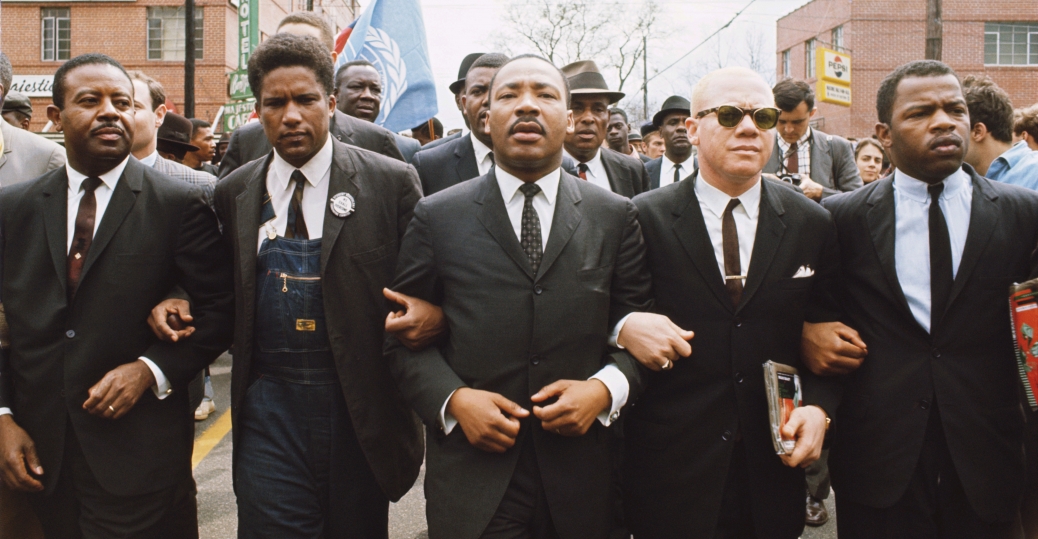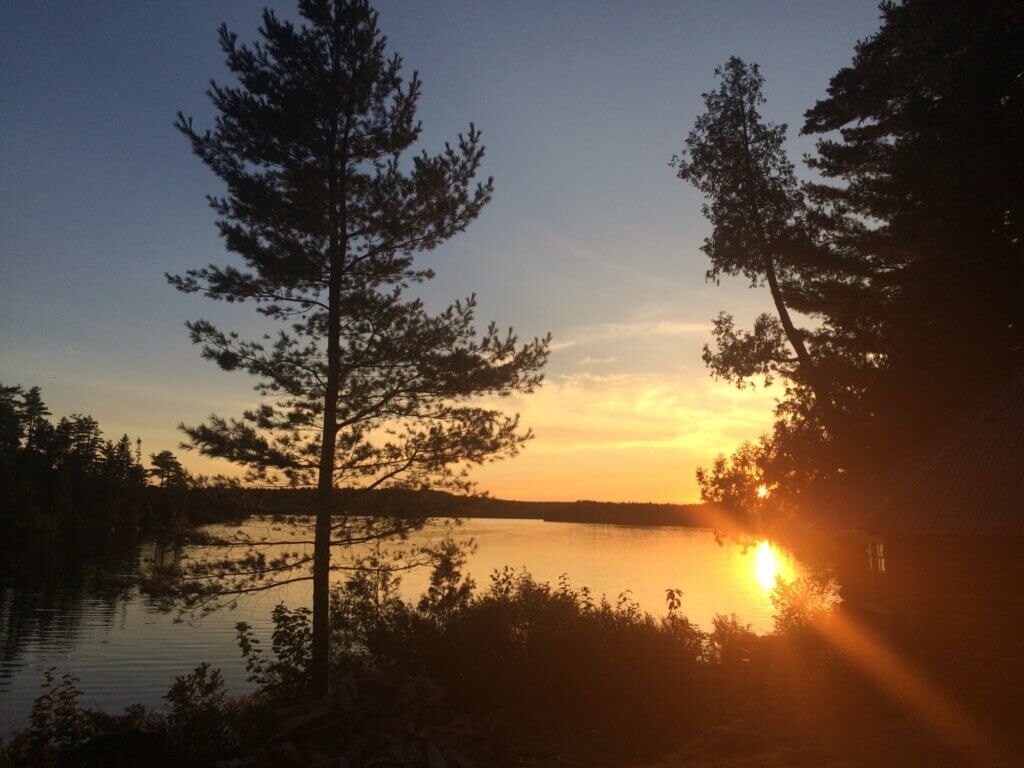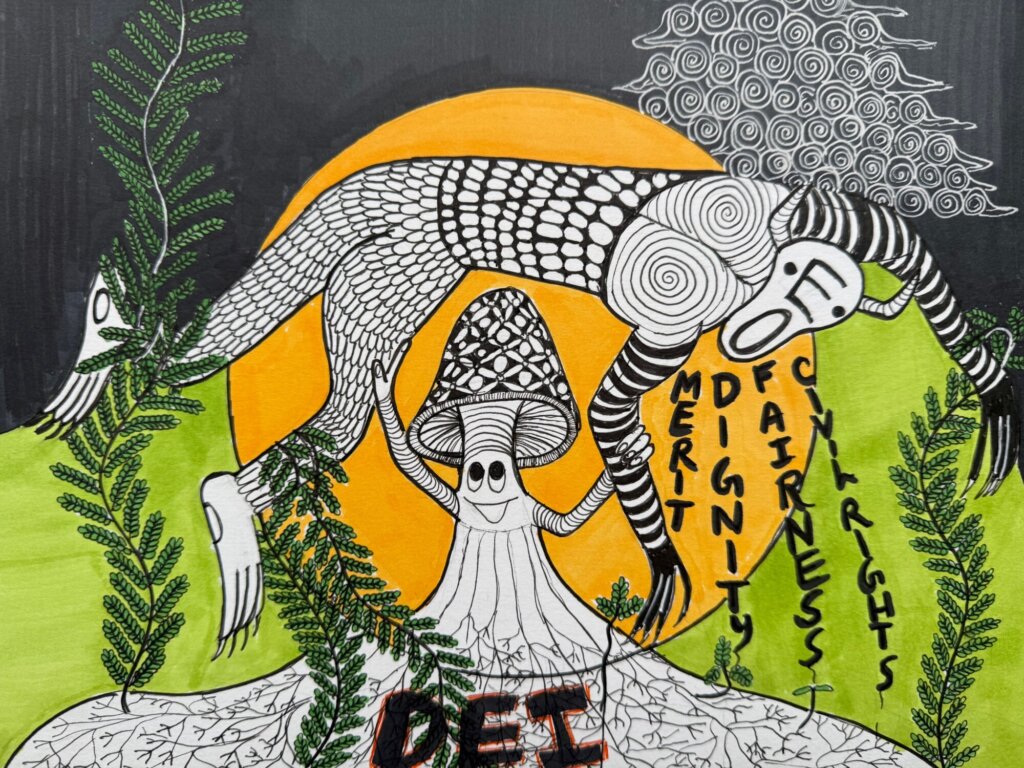Ava
Published on
01 - 21 - 2016
Ava
Published on
01 - 21 - 2016

Photo above: Martin Luther King, Jr. marching from Selma to Montgomery with John Lewis, Reverend Jesse Douglas, James Forman and Ralph Abernathy.
I had a very different idea about what I was going to write about this week to commemorate Martin Luther King, Jr. Day; I was about halfway through writing the post when I reached for Carolyn Finney’s Black Faces, White Spaces to verify some dates.
As I was thumbing through the pages, I found a page that I marked with an alarming number of exclamation marks. Curious about what had gotten me so excited, I read the passage. It happened to be a passage the tells the story of when Martin Luther King, Jr. and Coretta Scott King were trying to find a place to vacation in 1960, presumably to find some solace in the midst of the growing and taxing Civil Rights movement. A white colleague and his wife tried to organize a trip for the four of them to visit a National Park in Canada. In an effort to mitigate any embarrassment that might befall the Kings, the white man wrote to the park, describing the Kings as educated and cultured, and advocating for their acceptance in the park (the egregious respectability politics playing out in that interaction is for another blog, another day). Sometime later, the park wrote back that they could not accept the Kings as guests in the park because it might cause too much embarrassment.
After reading the passage, I remembered why I had inscribed it with so many exclamation marks. The story spins my brain as I ask myself, “what does this mean in the context of equity, inclusion, and diversity work in the outdoors? What is there to learn from this? ” Slowing down and sorting through my reflections, I realize that I keep coming back to the weight and pervasiveness of racism in North America, and why equity, inclusion, and diversity are so important in outdoor spaces.
First, and perhaps the most obvious reminder embedded in this story is the need to continue to make outdoor and environmental spaces inclusive. While this story happened in 1960, it is clear through research and anecdotes that outdoor spaces can still be and often are exclusionary. The Kings’ experience is another story in many of people of color being excluded, in one way or another, from the outdoors.
Of course, making the outdoors more inclusive so everyone has equal opportunity is important; yet if we stop there, we miss a larger point. We miss the point that at the heart of inclusion work is reducing the stress, anxiety, and fear related to one’s identity (be it racial or otherwise) in every space, including the outdoors. Therefore, when doing the work to make outdoor spaces more inclusive, we are actively re-shaping cultural norms. Along the same lines, the engaging in equity, inclusion, and diversity work does not stop once we move back inside and away from the outdoors; this work is important in physical and mental healthcare, in police brutality and accountability, in housing policy, in education, and every other aspect of life. Simply put, equity, inclusion, and diversity work in the outdoors and the environment can be an entry point to understanding and working through racial oppression, but is no means the exit point.
Finally, the most meta reminder about this story is that if the outdoors is a truly inclusive space, where individuals are free to cultivate their own environmental connection, it can actually provide space for finding peace, liberation and (the bell hooks’ concept of) love; all attributes necessary to continue to carry out the work that Martin Luther King, Jr. (and so many other activists) started over 50 years ago.
Dear Avarna community, We’re only four months into four years of this presidential administration, and the attacks on everything our…
Read full post about Staying the Course: On EOs, Education, ERGs, and SailingAvarna Community, It is with nearly all the emotions you might find in an emotions wheel that I am announcing…
Read full post about Farewell, AvarnaThe current administration’s anti-DEI Executive Orders have sparked varied responses in the nonprofit and private sectors—some organizations are defending DEI…
Read full post about DEI Jujitsu: Flipping the Backlash to Reframe Our Work

